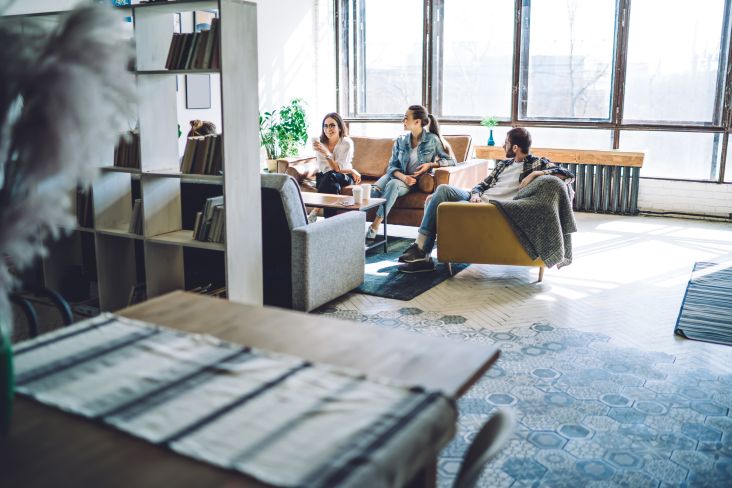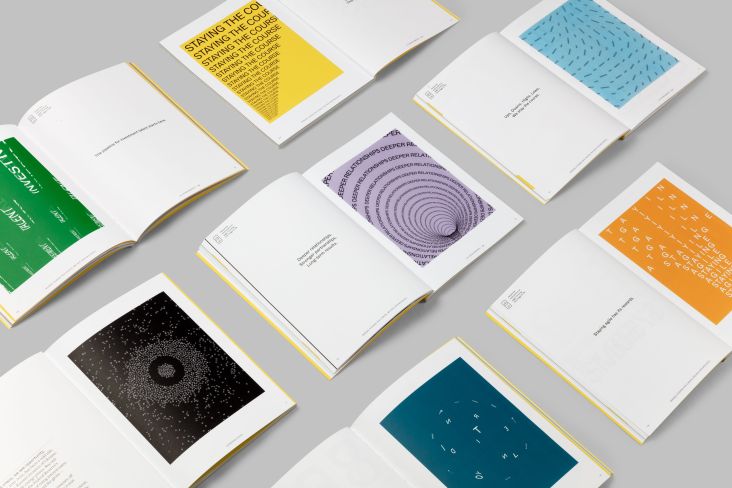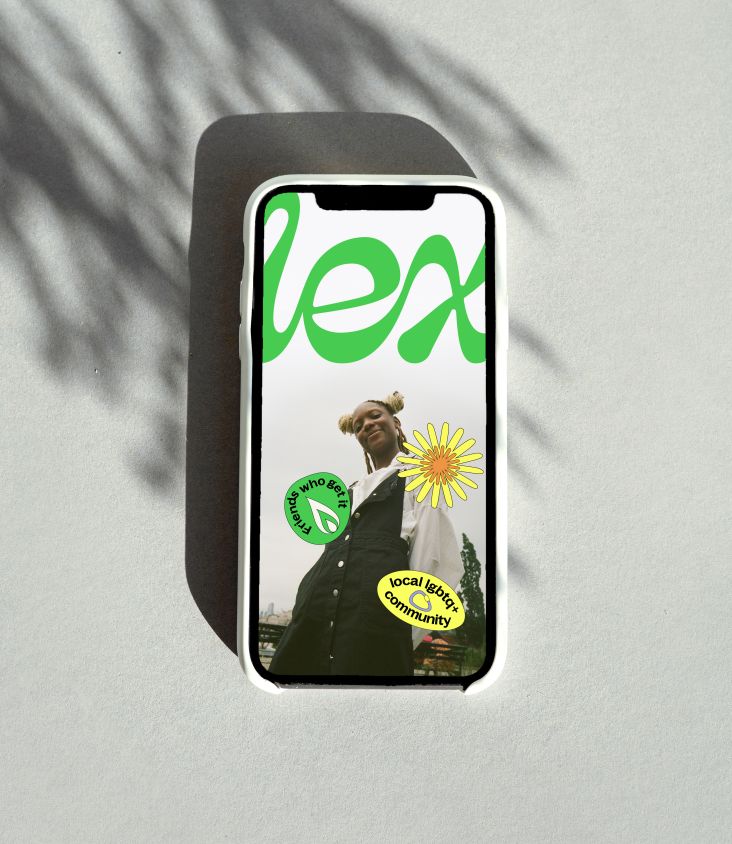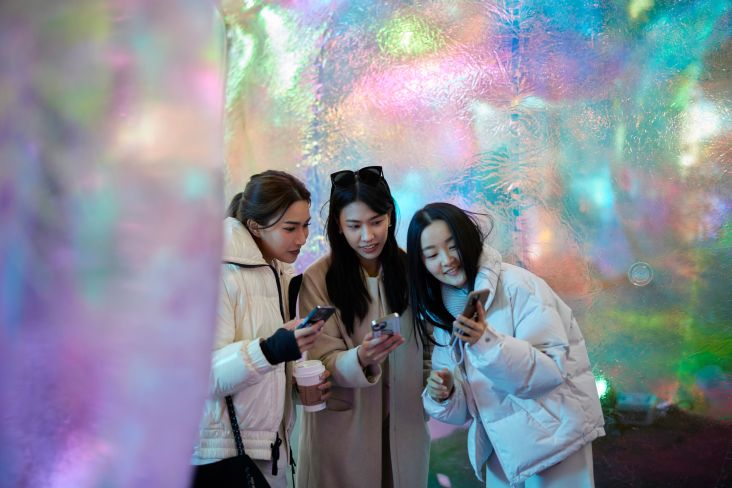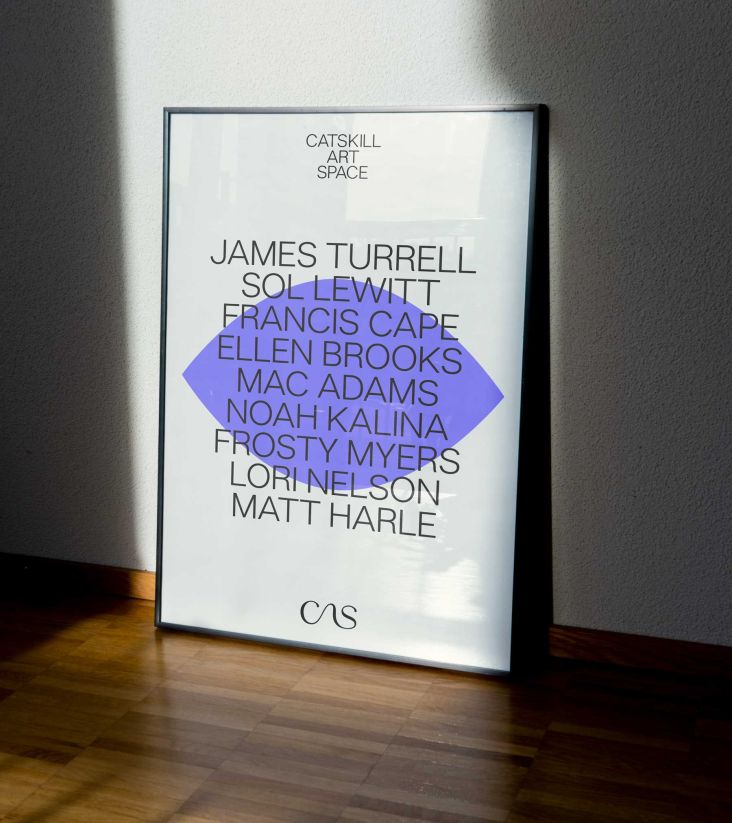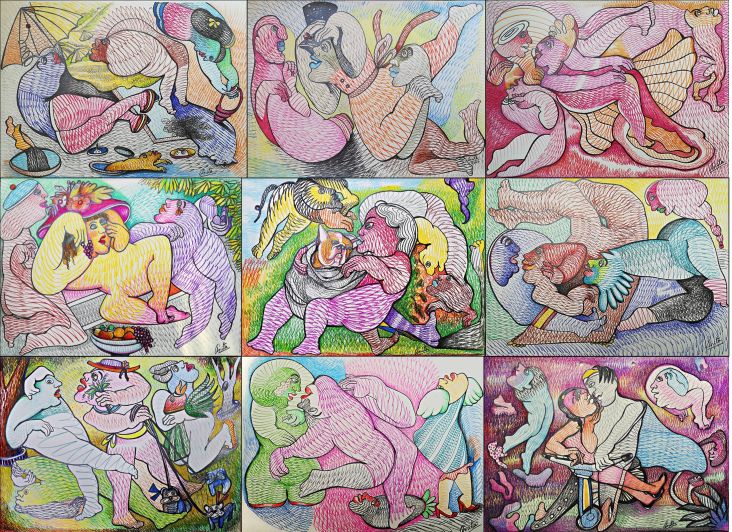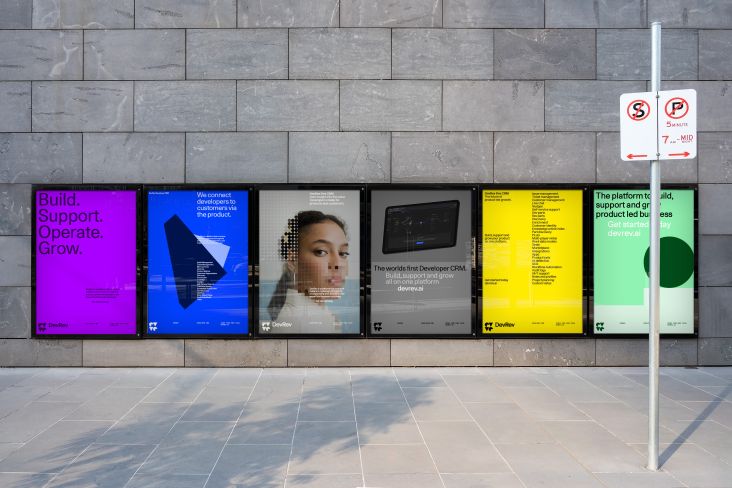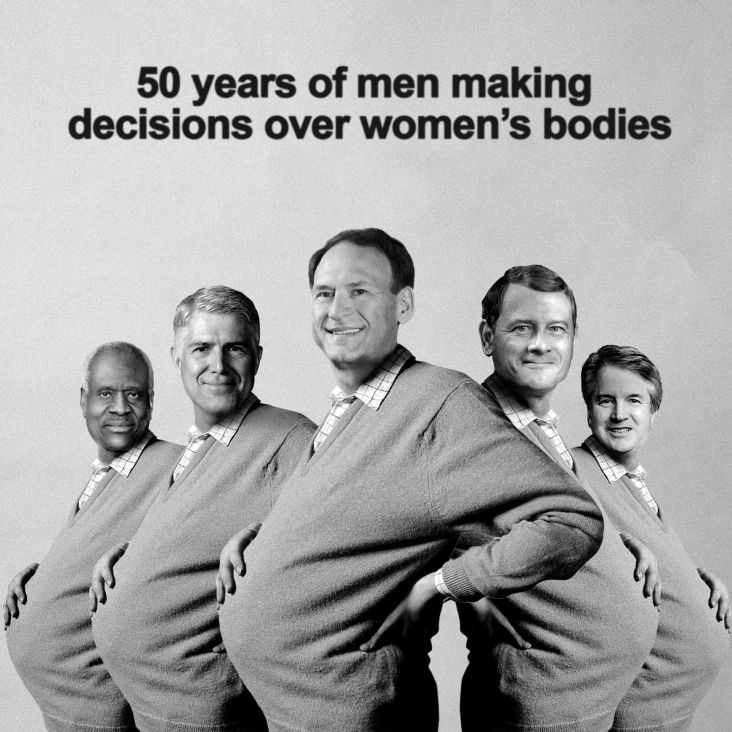The Alternative Limb Project by Sophie de Oliveira Barata is where art meets science
Artist and sculptor Sophie de Oliveira Barata has combined art, technology and science to create artificial limbs, which are wearable art pieces for performance and exhibition.
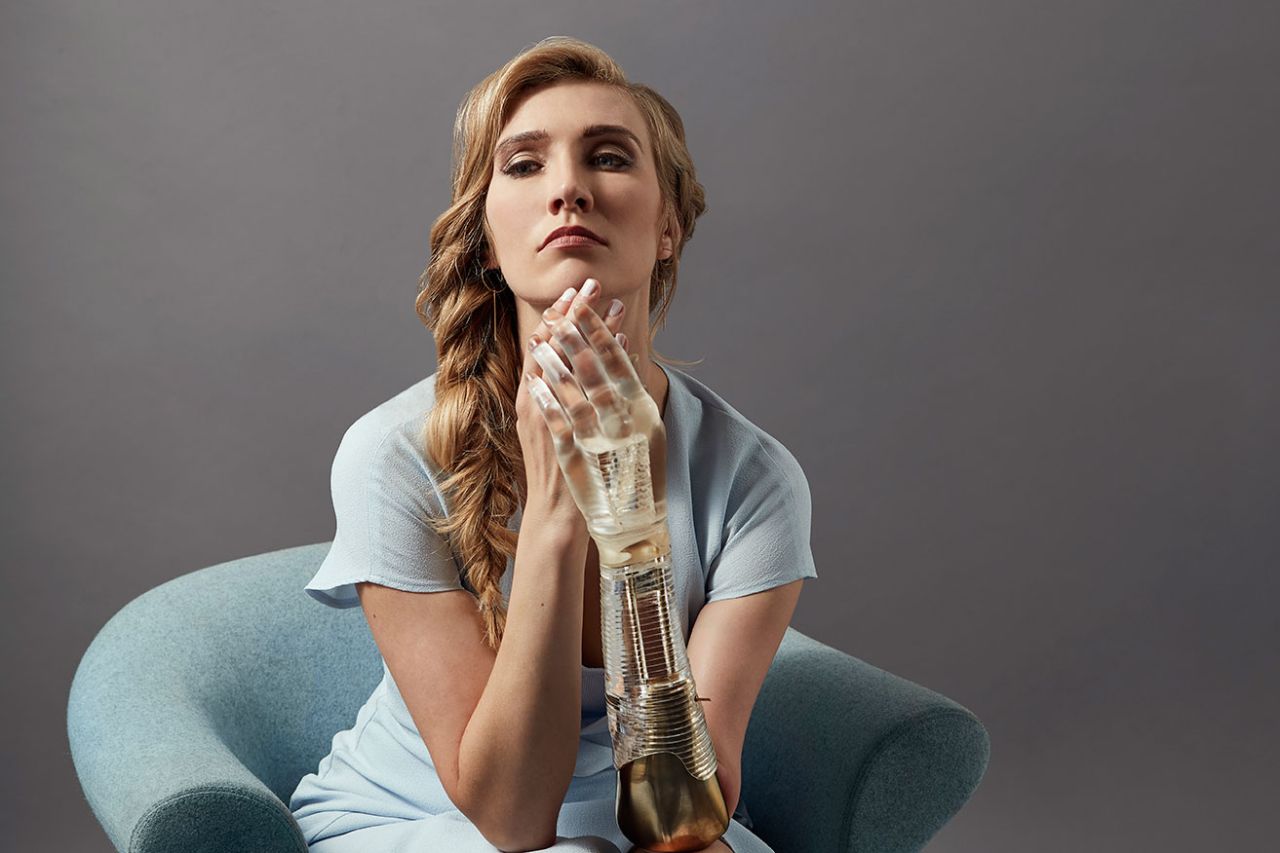
Synchronised is a re-imagining of the prosthetic arm as a piece of jewellery. Image by Omkaar Kotedia, co-created with Dani Clode.
The Lewes-based artist explores themes of body image and definitions of beauty. She uses the medium of prosthetics to promote positive conversations around disability and celebrate body diversity.
After almost ten years working for prosthetic medical providers, Barata started The Alternative Limb Project in 2011 and has exhibited her work at museums, art galleries and events worldwide.
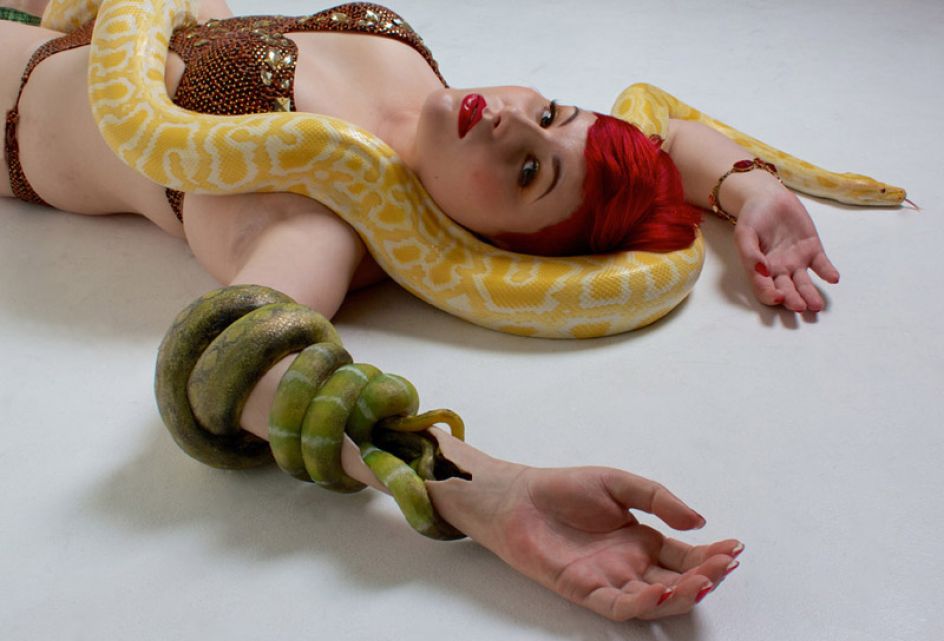
Jo-Jo Cranfield, British swimmer, inspirational speaker and swimming teacher with snakes crawling into her skin. Photo by R. Williams.
Barata collaborates with many other skilled workers in cutting edge technology and traditional craft to realise the projects. Her studio offers bespoke products to amputees that either blend in with their bodies or stand out as wearable pieces of art for the user. Some of Barata's work includes a leg with embedded stereo, another with removable muscles, and a limb with mini-drawers.
Barata says she has always had an interest in both medicine and art. During her time as an art student, she also worked at a hospital serving tea and coffee. While there, she became fascinated with the whole process of health care.
In fact, it changed her career path. "I was going to go into fine art but decided to go into special effects. I did that partly because I watched hospital dramas such as Holby City and Casualty."
From there, Barata worked on film productions making prosthetics, wig making and creature effects. She then heard about a job making realistic-looking limbs. "I thought I could use some of the skills, and it would be more rewarding as a career. It would be challenging to make something convincing and lifelike."
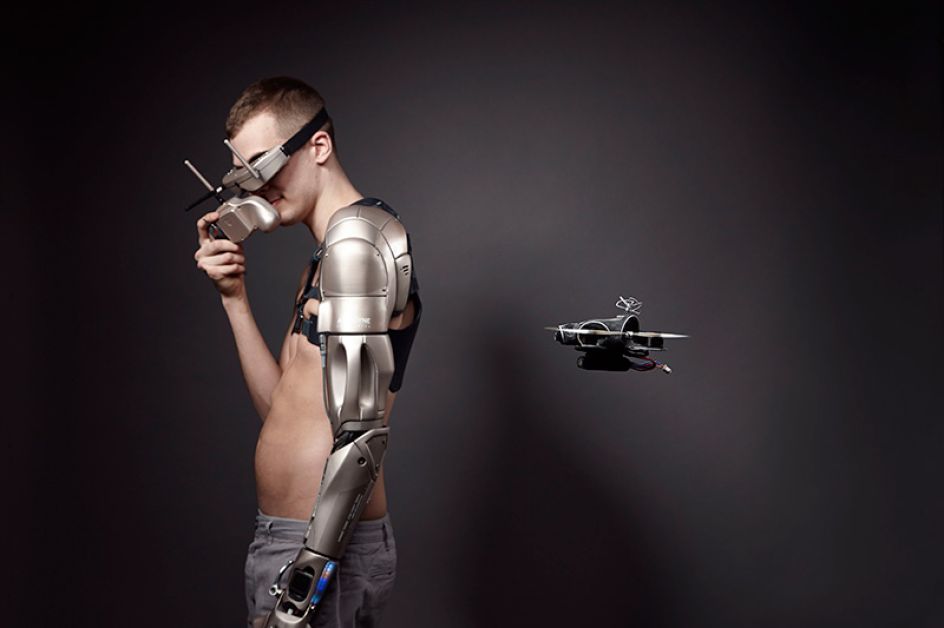
James Young, a speaker and Biological Science graduate with his bionic limb. Photo by Omkaar Kotedia. Sponsored by Konami co -created with GTR racing, Open bionics and others.
While working for prosthetic medical providers, Barata made fingers, toes, partial feet, and partial hands – which were all sculpted. She didn't get to see many clients, although a few clients did come to the clinic to see the prosthetist – the person who rehabilitates, creates and fits prostheses for people requiring artificial limb replacements.
"They would send us information. We would get pictures, casts, and colour references and then make the limb according to those instructions."
The sculptor was obsessed with her work, often staying at work until 4am, creating pieces out of the material in the studio. She would cycle around the block, then get a couple of hours of sleep and start work again.
After almost a decade, Barata decided to try something new. "Although I was really enjoying it, I felt from a creative perspective I was missing the artistic, imaginative pieces."
Creating The Alternative Limb Project, Barata became more involved with the clients on a personal level, which took the work to another, more intimate level. One client she remembers was a little girl who had been hit by a bus and, as a direct result of the accident, had lost her leg.
Through insurance money, the girl could work with Barata to create a bespoke limb. "She spoke about having drawings on her leg, and I would discuss ideas with her, so we got quite close. I could see from a rehabilitation perspective this was something interesting here.
The sculptor has also worked with an amputee model, a singer/songwriter and a performing artist. Modesta had a voluntary below-the-knee leg amputation due to health issues she'd had since birth. "I thought it would be really interesting to make something unusual and try out some outlandish ideas."
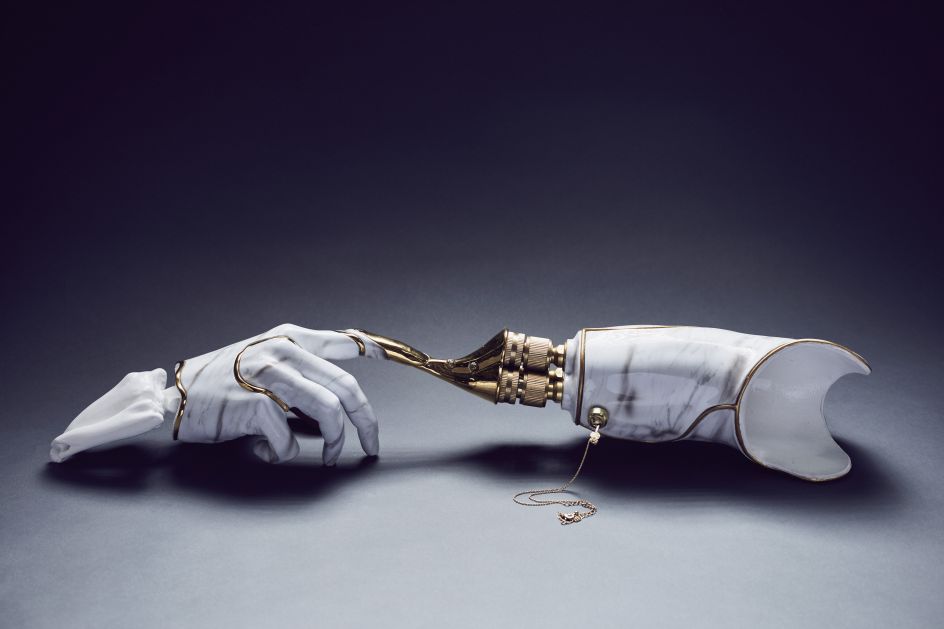
The marble arm was made for Luc Bruyere, with prosthetist Chris Parsons, Rudi Kolenc, Tyler and Ryan.
Barata feels her work allows amputees to express themselves and be playful. "To embrace your difference and send out a message without speaking, to say how you feel about your body."
The way much of the world views amputees, often with pity or avoidance, changed with the London Paralympic Games in 2012. Suddenly it seemed that amputees and people in wheelchairs were more visible, coming out into the streets and on public transport like never before to cheer on their sporting heroes.
Conflict and warfare have also created a change, says Barata. "Much money was being pumped into the military to improve prosthetics. You had a lot of veterans wearing amazing limbs, and that is being filtered down into the NHS."
The limbs created by The Alternative Limb Project are as good as any prosthetic out there, says Barata. She explains there is a triangular equation to aim for – comfort, function and aesthetics. "Ideally, you want all three. But if you push one to the extreme, sometimes to other two suffer. For example, if it's a performance art piece, then it's not for everyday use."
The process can take anything from one month to a couple of years. It's a long thought process, as well as discussions with the client on what they want and the best way to achieve the result.
Regarding materials, Barata uses silicon, which she says is like Turkish Delight in terms of consistency. She then puts in all the colours to create the skin tones and adds tiny fibres to make it look less like plastic and then sculpts and makes tiny scratches for a realistic look.
The client is very much involved in the process. "They can add details like a scar, a tattoo, a little beauty spot, or ask me to go easy on the wrinkles or have a darker-coloured arm or leg. They then tan themselves to match the limb."
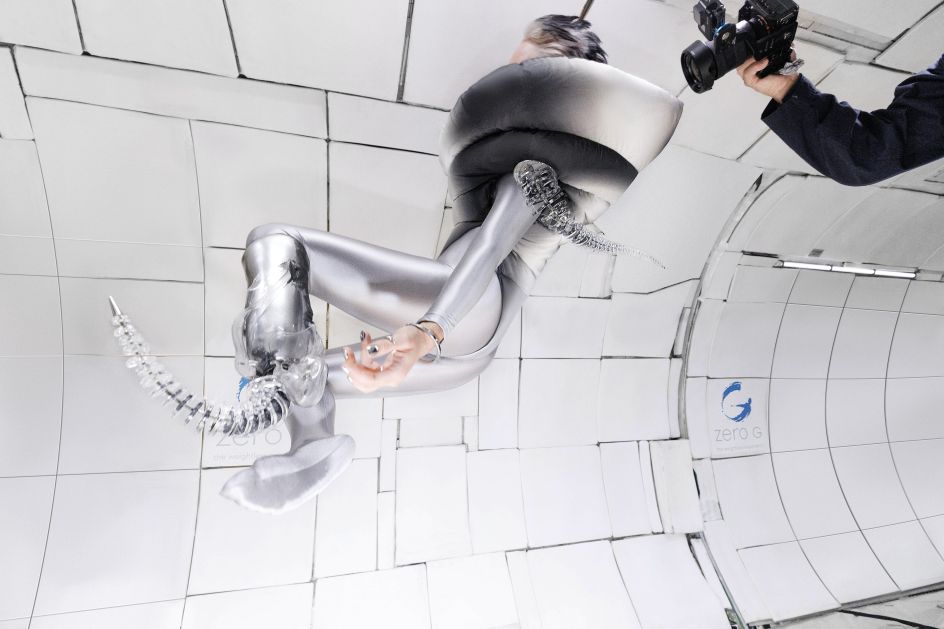
Viktoria Modesta in zero G flight. Courtesy of Steve Boxall / Zero. Created with prosthetist Nick Hilsdon.
Barata is doing something really special in turning the conversation about disability from one of pity to acceptance. Some people don't want to be looked upon first and foremost as an amputee.
Some people don't want to be looked upon first and foremost as an amputee. And there are choices which can be made – to either have a realistic limb to blend in or have a limb which is a performance artwork that makes the wearer stand out. Whichever Barata's clients go for, it's all about acceptance and coming to terms with their identity and body.
This work is about pushing ideas to their extremes – and that sweet spot between the meeting of science, art and technology, to create interest and excitement around prosthetics.
Most of all, Barata is interested in the human aspect. Her work could "look futuristic, or it could be really beautiful or absurd and funny. It's about bringing life and soul to the limb."









](https://www.creativeboom.com/upload/articles/86/862919952c0ad18439004228895a431dc6e45ffc_732.jpg)




